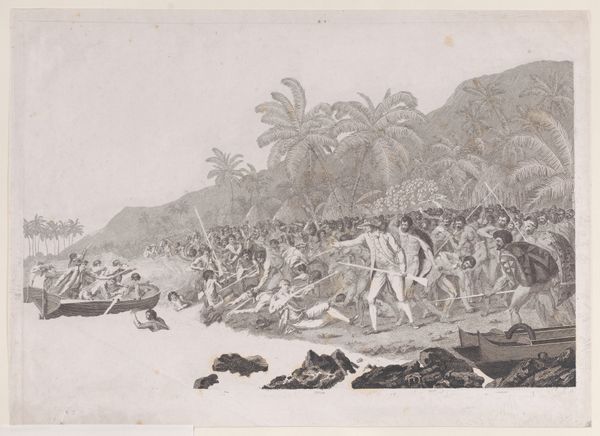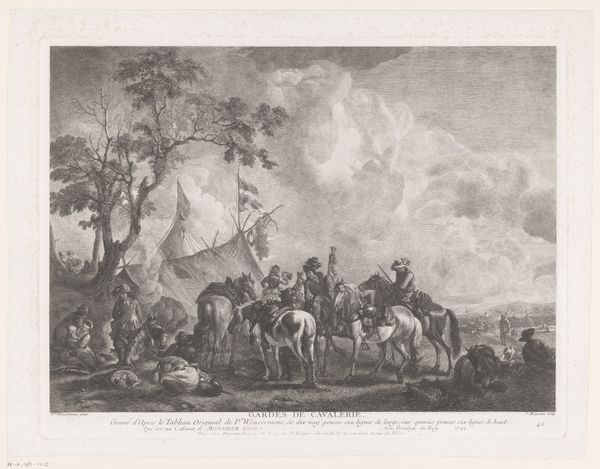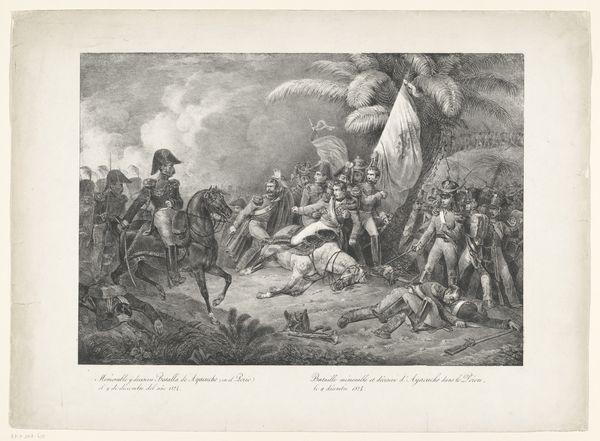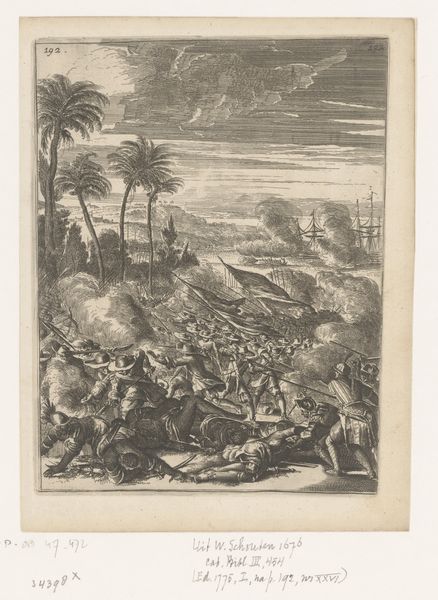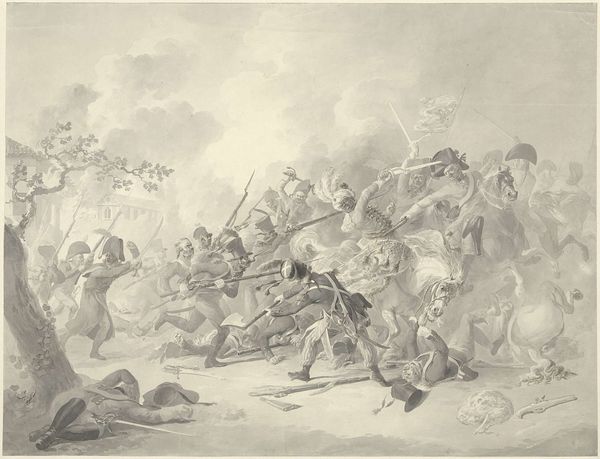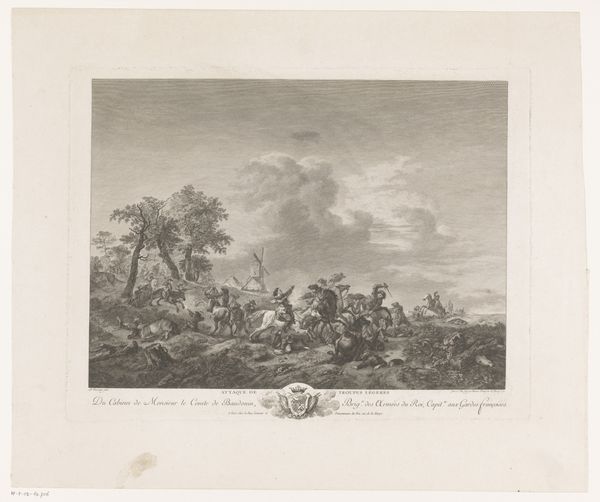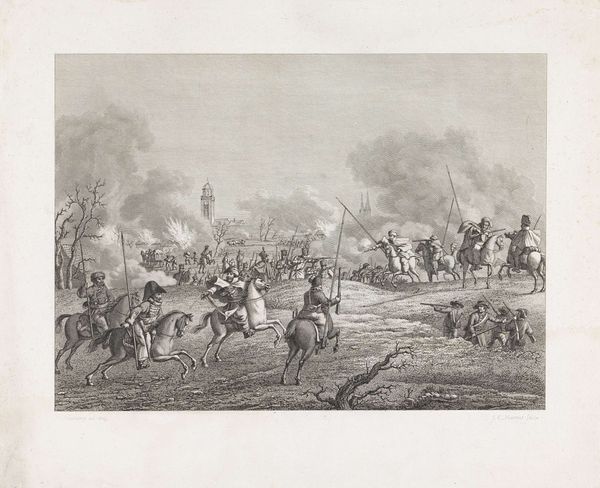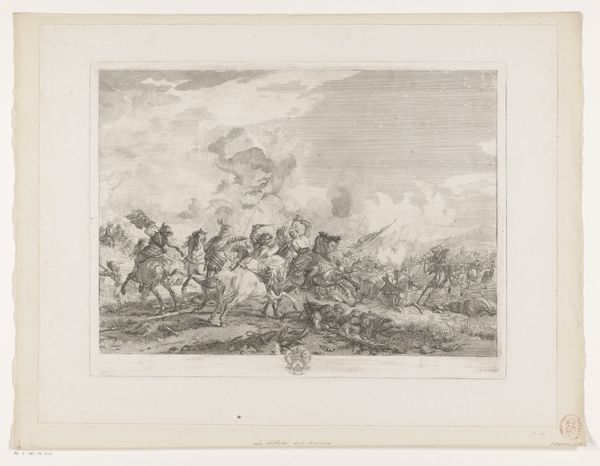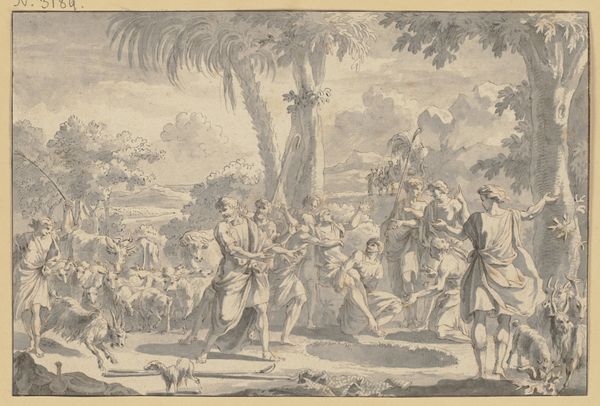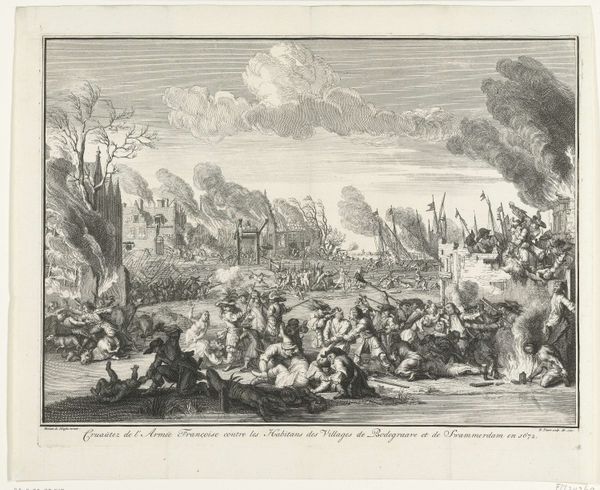
Nederlanders in gevecht met de bevolking van een onbekend land 1832 - 1894
0:00
0:00
drawing, print, pencil
#
pencil drawn
#
drawing
#
narrative-art
# print
#
charcoal drawing
#
pencil drawing
#
pencil
#
history-painting
#
realism
Dimensions: height 300 mm, width 393 mm
Copyright: Rijks Museum: Open Domain
Curator: Rochussen's drawing, dating from 1832 to 1894, and entitled "Dutch in Combat with the Population of an Unknown Country," depicts a violent clash in what appears to be a tropical setting. Editor: The overwhelming impression is chaos and brutality. Look at the figures flailing, the smoke obscuring the scene. It's incredibly visceral, despite being rendered in pencil and print. Curator: Indeed. Rochussen was a master of realism, capturing the raw energy of conflict. We see Dutch soldiers, identifiable by their uniforms, locked in fierce combat with the Indigenous population amidst palm trees and dense foliage. This piece begs questions about Dutch colonialism during that period. Editor: Exactly. What's striking is how the "unknown country" is presented as an almost anonymous mass. Their individual stories, their resistance, are flattened. It perpetuates a narrative of colonizer versus colonized. Curator: And yet, the composition itself seems somewhat ambivalent. The Dutch soldiers aren't portrayed as unambiguously victorious; some are wounded, struggling. Is Rochussen critiquing the brutality of the conflict or glorifying military prowess? Editor: That's where the social context is crucial. This was produced during a period of intense colonial expansion. Showing the 'struggle' could also serve as propaganda, valorizing the military effort and dismissing the casualties and cultural costs inflicted on colonized populations. Curator: Perhaps. Rochussen’s style captures a moment frozen in time, yet leaves interpretations open. It reflects the complex attitudes toward colonial power at the time it was created, attitudes which were always fluid and contingent on specific political, social and cultural considerations. Editor: Agreed. Art forces us to look critically not only at the work itself but also at how historical power structures shaped its meaning, impacting entire groups of people and their representation in a dominant cultural hegemony. Curator: Reflecting on it, Rochussen offers us a glimpse into the ambiguities and violence inherent to colonialism during the 19th century. Editor: It makes you question whose stories get told and who holds the brush when history is painted. The art speaks, but it leaves crucial questions unanswered.
Comments
No comments
Be the first to comment and join the conversation on the ultimate creative platform.
